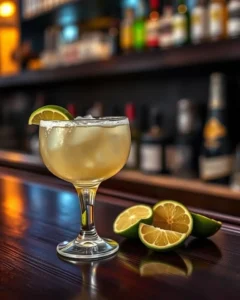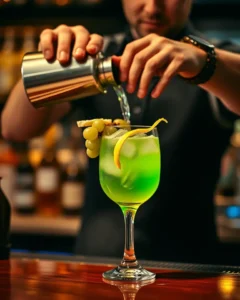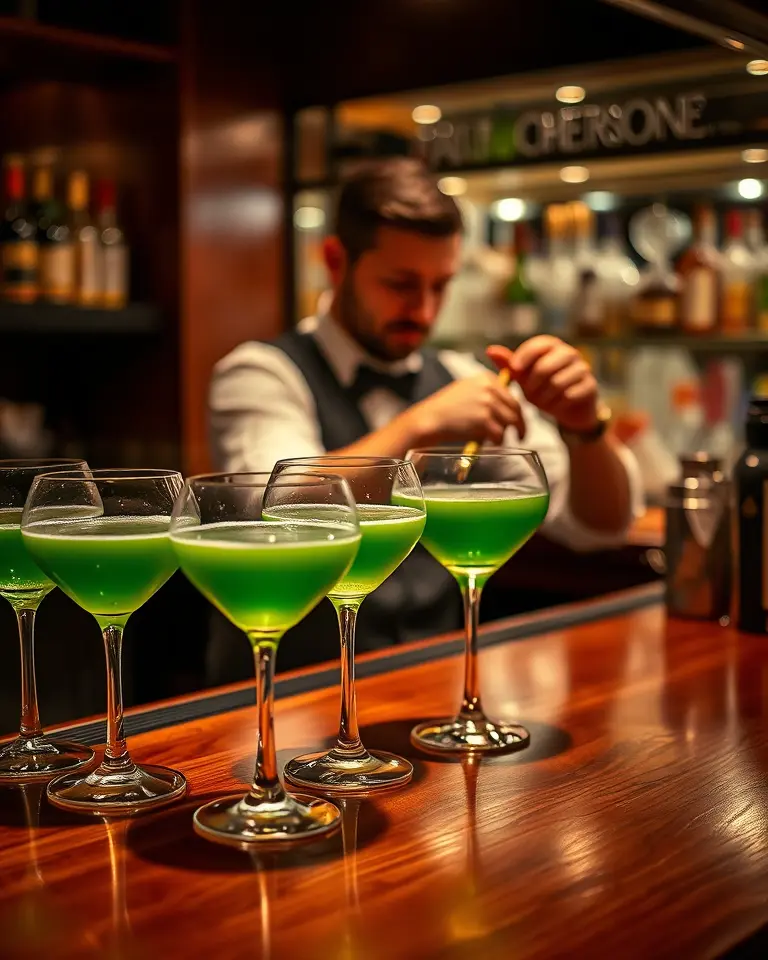The Last Word cocktail is a classic, pre-Prohibition era drink that has seen a remarkable resurgence in popularity. With its unique blend of sweet, sour, and herbal flavors, it’s a drink that has captured the attention of cocktail enthusiasts worldwide. This equal-parts cocktail is known for its complex yet balanced profile, making it a favorite among both bartenders and drinkers.
The History of the Last Word
The Last Word’s origins trace back to the early 1900s, specifically around 1915, at the Detroit Athletic Club. While the exact creator is debated, it’s believed that a bartender named Frank Fogarty, also known as the “Dublin Minstrel,” may have played a role in popularizing the drink. Fogarty, a vaudeville performer, is said to have brought the cocktail to New York in the late 1910s. The cocktail was even featured in Ted Saucier’s 1951 book, “Bottoms Up.”
The Last Word gained some traction but eventually faded into obscurity after World War II. It wasn’t until the early 2000s, during a cocktail renaissance, that it was rediscovered by Murray Stenson of Seattle’s Zig Zag Café. Stenson found the recipe in Saucier’s book and began serving it, which led to its renewed popularity and reintroduction to bars across the globe.
The Classic Last Word Recipe
The classic Last Word cocktail is known for its equal-parts composition, making it easy to remember and recreate. The traditional recipe includes:
- ¾ ounce (22.5 ml) Gin: A good quality, mid-priced London Dry gin is generally recommended.
- ¾ ounce (22.5 ml) Green Chartreuse: This herbal liqueur is a key component of the drink, contributing its distinctive flavor profile.
- ¾ ounce (22.5 ml) Maraschino Liqueur: This cherry-flavored liqueur adds a touch of sweetness and complexity.
- ¾ ounce (22.5 ml) Fresh Lime Juice: Freshly squeezed lime juice is crucial for balancing the sweetness and adding acidity.
How to Make a Last Word
- Chill your glass: A coupe glass is the traditional choice for serving the Last Word. Place it in the freezer or fill it with ice while you prepare the drink.
- Combine Ingredients: In a cocktail shaker, add the gin, green Chartreuse, maraschino liqueur, and lime juice.
- Add Ice: Fill the shaker with ice.
- Shake Well: Shake vigorously for 10-15 seconds, until the shaker is icy cold.
- Strain: Remove the ice from your chilled glass and strain the cocktail into it.
- Garnish (Optional): Garnish with a maraschino cherry or a lime twist. Luxardo cherries are often preferred for their higher quality.
Key Ingredients Explained
Gin
The gin you choose can significantly affect the final flavor of your Last Word. While London Dry gins are generally favored for their robust juniper notes, some bartenders suggest experimenting to find the best fit. Some popular options include:
- Tanqueray No. 10: Known for its prominent juniper and citrus notes.
- Sipsmith London Dry Gin: A classic London Dry with a good balance of botanicals.
- Broker’s London Dry Gin: Offers a strong juniper backbone.
- Bombay Sapphire: A gin with a lighter juniper presence and balanced botanicals.
- Plymouth Gin: Known for its smooth and slightly sweet character.
- Hendrick’s Gin: Infused with rose and cucumber, offering a unique twist.
- Ford’s Gin: Another excellent London Dry option, well-suited for cocktails.
It’s often recommended to use a gin with balanced juniper notes, as overly juniper-forward gins can overwhelm the other flavors.
Green Chartreuse
Green Chartreuse is a unique, naturally green liqueur made by Carthusian monks in France. The recipe is over 400 years old, and the exact blend of 130 botanicals is a closely guarded secret. It has a distinct herbal, complex, and slightly sweet flavor profile, essential to the Last Word’s character. Due to its somewhat limited availability and unique flavor, there isn’t a perfect substitute. Some suggest Izarra, a Basque herbal liqueur, as a possible alternative, but the consensus is that waiting for the real deal is often worth it.
Maraschino Liqueur
Maraschino liqueur, often from Luxardo, is a cherry-flavored liqueur that adds sweetness and a complex, slightly nutty flavor to the cocktail. It is distinct from the cloyingly sweet maraschino cherries found in some cocktails. Its distinct flavor profile is crucial for achieving the Last Word’s balance.
Fresh Lime Juice
Freshly squeezed lime juice is a must for the Last Word. The acidity balances the sweetness of the liqueurs and adds brightness to the drink, creating its signature tartness. Pre-bottled lime juice does not provide the same level of freshness and zest.
Variations and Twists on the Last Word
The Last Word has inspired many variations, as bartenders and enthusiasts have experimented with different spirits and flavors. Here are a few notable examples:
Final Ward
This variation swaps the gin for rye whiskey, maintaining the other ingredients. It adds a spicy, robust dimension to the herbal and citrus notes of the original.
Naked and Famous
This mezcal-based variation uses mezcal, Aperol, yellow Chartreuse, and lime juice. The smoky mezcal and bitter Aperol create a more complex and smoky flavor profile.
Dublin Minstrel
A warm whiskey variation that uses Irish whiskey in place of gin, named after Frank Fogarty, “the Dublin Minstrel.”
First Word
Created in response to a Chartreuse shortage, the First Word replaces Green Chartreuse with dry vermouth and a bittersweet orange-red aperitivo, alongside gin, maraschino liqueur, and lime juice.
Other Variations
There are numerous other riffs, including:
- A Quiet Word: Uses light rum instead of gin.
- Bird is the Word: Features tequila or grappa as a base.
- Closing Argument: A mezcal based variation.
- Dutch Word: Uses genever in place of gin.
- Last Flight: Combines elements of the Last Word and Paper Plane cocktails.
- Last Lap: Uses sage-forward gin and Yellow Chartreuse.
These variations showcase the versatility of the Last Word’s structure and the possibilities for creative flavor combinations.
Why the Last Word is So Popular
The Last Word’s enduring popularity can be attributed to several factors:
- Balanced Flavor: The equal-parts recipe creates a harmonious blend of sweet, sour, and herbal notes, making it a well-rounded and complex cocktail.
- Unique Ingredients: The use of Green Chartreuse and maraschino liqueur gives the Last Word a distinctive flavor that is both intriguing and satisfying.
- Historical Significance: Its origins in the Prohibition era add a layer of romance and mystique to the drink.
- Versatility: The simple structure allows for endless variations and experimentation.
- Resurgence: Rediscovered during the cocktail renaissance, the Last Word became a staple in craft cocktail bars and has since been embraced by home bartenders.
Final Thoughts
The Last Word is more than just a cocktail; it’s a piece of history in a glass. Its complex flavor profile, intriguing backstory, and versatility have ensured its place as a modern classic. Whether you prefer the original recipe or one of its many creative variations, this cocktail is a must-try for any serious cocktail enthusiast.







